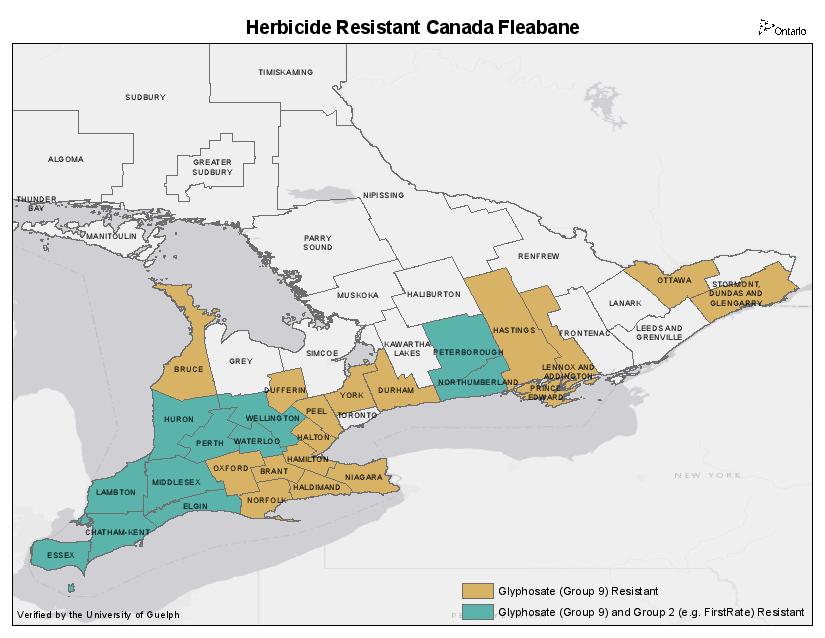Weed is becoming increasingly herbicide resistant
By Diego Flammini
Assistant Editor, North American Content
Farms.com
According to new maps published by OMAFRA, Canada fleabane is present in more than 20 counties across Ontario and resistant to glyphosate.
A select few counties including Wellington, Perth and Elgin have Canada fleabane that’s also resistant to FirstRate.

Mike Cowbrough, Weed Management Lead for OMAFRA, said in a March 15 interview that focusing on one herbicide and not practicing diverse crop rotation could lead to the weed becoming more tolerant to herbicides.
He said when farmers rotate crops they may change their herbicides, planting and harvesting schedules, which may help keep weeds from becoming resistant.
OMAFRA has provided tips on how to manage Canada fleabane in corn, soybeans and winter wheat.
Corn
Tillage or a pre-plant burndown can help with season long control of Canada fleabane if the crop canopy closes quickly.
According to OMAFRA, glyphosate + Banvel II can control 99 per cent of Canada fleabane.
Soybeans
Tillage can help control fleabane in conventionally tilled fields. OMAFRA suggests a pre-plant burndown in a no-till operation.
In soybean fields, OMAFRA suggests that Broadstrike Dual Magnum can help control 99 per cent of the weed.
Winter Wheat
When it comes to winter wheat, OMAFRA says “with the exception of MCPA Amine, Refine Extra and Buctril M, Badge or Mextrol, most of the post-emergent broadleaf herbicides registered for use on winter wheat provide good control of Canada fleabane.”
According to Cowbrough, farmers across Ontario are sending samples to the University of Guelph for examination.
Once the samples are tested, the maps will be updated to show their results.
Join the discussion and tell us if you’ve had issues with Canada fleabane. What weed management practices did you employ to manage the issue?